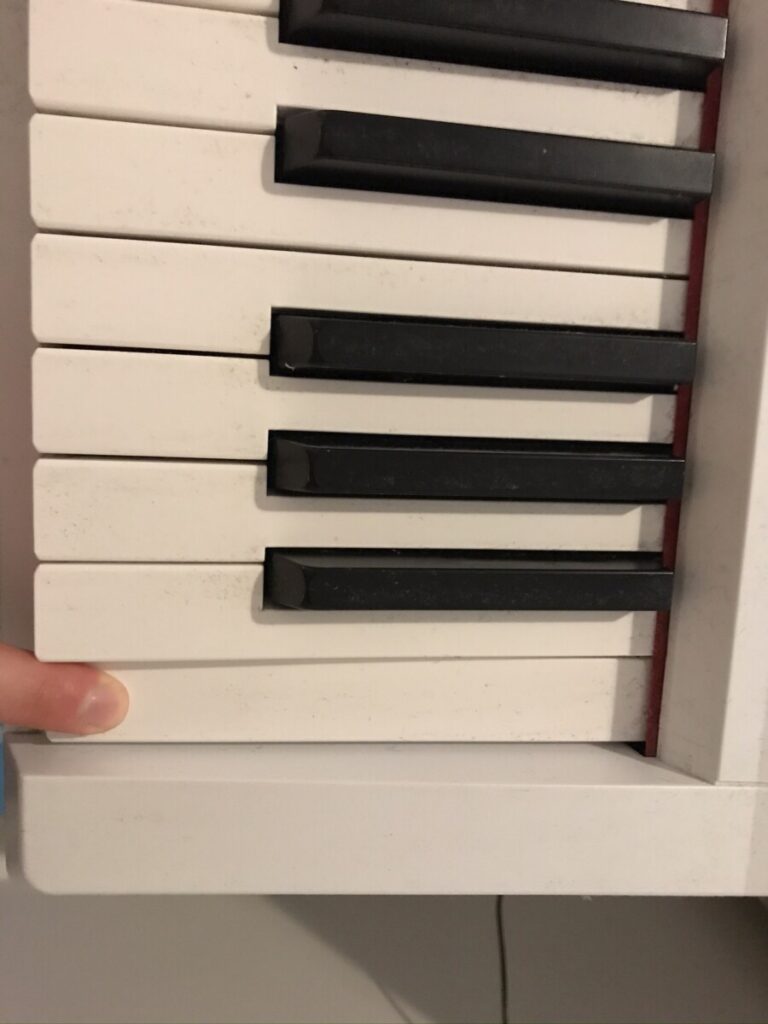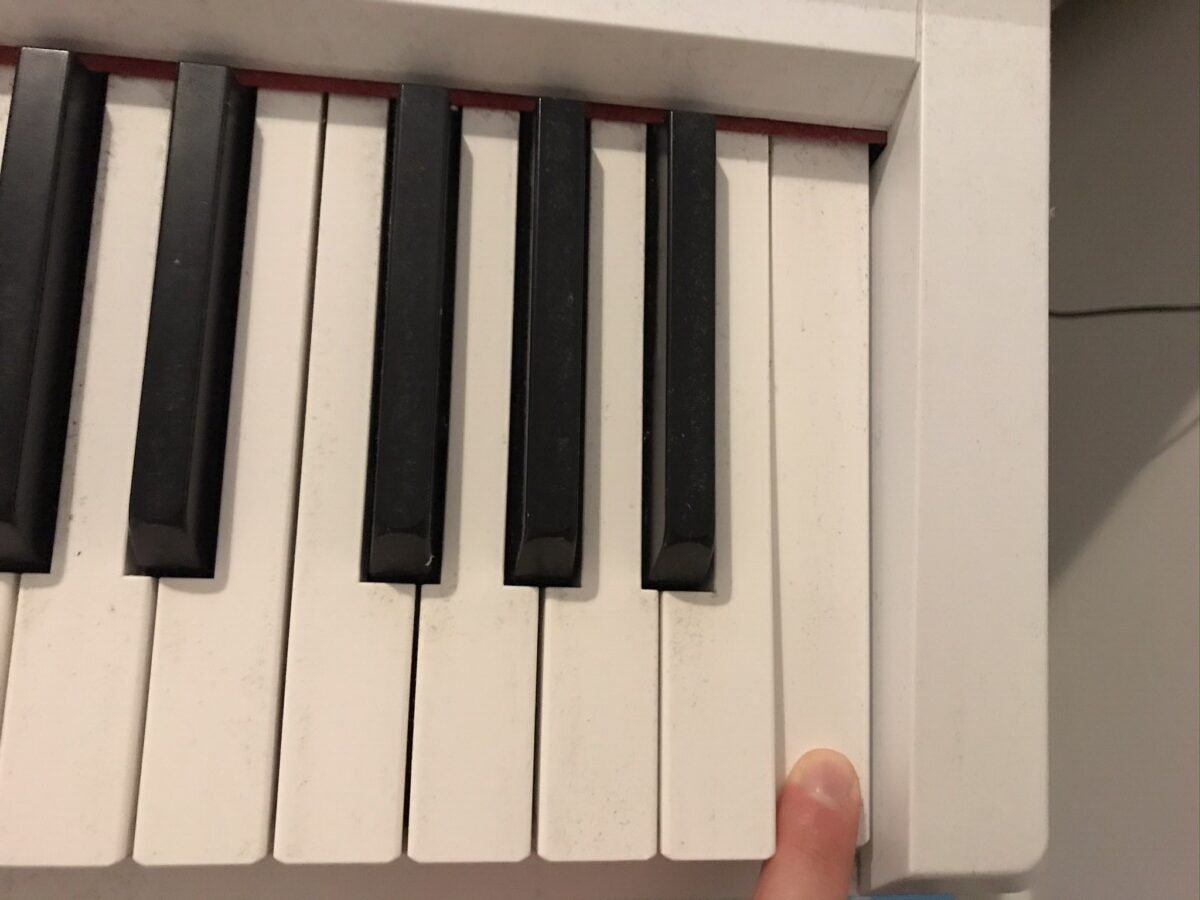Sometimes it seems like your digital piano or keyboard is a bit out of tune, even though that seems impossible. Today I’ll discuss how this can happen, and how to fix it.
Digital pianos and keyboards can be out of tune relative to 440 Hz. This can be rectified in two ways: transposing in small increments back to 440 Hz, or if that fails, performing a factory reset. I’ll explain how below.
Digital pianos and keyboards are not supposed to need tuning like acoustic pianos – often this is one of the reasons that we buy them in the first place, to avoid the money and hassle of getting a piano tuned regularly.
Digital pianos/keyboards just use built-in pre-recorded sounds, so there is no mechanism that can gradually become out of tune in the way that the strings of acoustic pianos do over time. However, just because a digital piano doesn’t “need tuning” in the traditional sense, that doesn’t mean that it can’t be out of tune relative to the standard Western 440 Hz.
Sometimes the tuning of a digital piano seems slightly “off”. Not so much that it’s been transposed a whole semitone or more, but just a fraction of a semitone.
Many people are familiar with how to transpose their keyboard up or down by a certain number of tones or semitones, but what is less well-known is that many digital keyboards can also be transposed by small increments of Hz. Often keyboards can be transposed up or down by as little as 0.2 Hz at a time.
This gives us two options for how to return a digital piano to standard tuning:
How to Fix a Digital Piano that is Out of Tune
The best option to try first is to transpose the pitch back to 440 Hz manually.
This will differ across different keyboard models, so Google the manual for your specific digital piano, or if your model is no longer produced, find the manual for the new make of your same keyboard series. The manual should tell you how to transpose up or down by hertz, and/or how to return to 440 Hz.
For example, for my keyboard which is a Yamaha P-115, all you have to do to return the tuning to A4 = 440 Hz is hold down the two function buttons and press the lowest B of the keyboard. Your keyboard might require a different method though, so check in your manual.
You can also return your keyboard tuning to 440 Hz by using the software MainStage.
If you can’t find the manual for your digital piano, and you don’t have MainStage, then you can try method 2: perform a factory reset.
How to perform a Factory Reset for a Digital Piano/Keyboard
Here is the almost universal way of resetting your keyboard back to all of its original settings:
- Turn your keyboard off
- Hold down the highest white key (see photo below). For full-sized (88-key) keyboards this will be the top C key, but this might be a different key on smaller-sized keyboards
- Whilst holding down the top key, turn your keyboard on
- Continue to hold down the top key for a further three seconds once your keyboard has turned on

This factory reset method works for nearly all keyboards, but if you have a keyboard that this doesn’t work for, the manual for your keyboard model will explain how to perform a factory reset for your particular digital piano.
Pro tip: if you have recorded any tracks on your keyboard, back them up before doing a factory reset, because resetting your digital piano will erase anything that you have previously saved!
In the unlikely event that none of these things restore your keyboard back to standard tuning, I would recommend getting in touch with your local musical instrument shop/store, or directly with the manufacturers of your digital piano.
Why has my Digital Piano/Keyboard Gone Out of Tune?
There are a few reasons why your keyboard may have ended up slightly out of tune. It could be as simple as a cat walking around on the controls, or a young child having fun pressing buttons when you are not looking. Maybe it is a tech-savvy friend playing a prank on you, hoping that you will turn up to your next rehearsal or gig with an out of tune keyboard!
Sometimes this sort of thing can also be caused by an odd voltage spike or a small power cut etc.
The important thing is, as long as one of these quick fixes works for you, you now know what to do if it ever happens again.
How to Tell Whether your Digital Piano/Keyboard is Out of Tune or Not
That’s all well and good, but what happens if you’re not sure whether your digital piano is in tune or not?
To tell whether your digital piano/keyboard is in tune, you can use a tuning app on your phone. There are plenty of free apps to choose from – my favourite is called insTuner. With the app open, place your phone near to your keyboard speakers and the bar on the app will show you whether a note is in tune or not relative to standard A4 = 440 Hz tuning.
Even if your digital piano has been transposed down or up from 440 Hz, it should still be in tune relative to itself e.g. all of the notes “A” on the keyboard should still be in tune with each other.
It is normal for the very high notes or very low notes to sometimes seem slightly out of tune, but if any other notes are out of tune relative to the rest of the notes on your keyboard then something is more seriously wrong, and I would recommend getting in touch with a repair shop. It is unlikely that the steps above will fix that more serious issue, although I guess it is worth a try…
How to Tune your Digital Piano/Keyboard to Other Frequencies e.g. 432 Hz
Sometimes you may actually want to alter the tuning of your official piano/keyboard to frequencies other than the standard Western 440 Hz, for example to replicate Baroque tuning.
The manual for your model of keyboard should explain how to do this for your specific keyboard. Often it will be similar to the function that we used above to restore tuning from something else back to 440 Hz.
For example, to do this on my Yamaha P-115 keyboard, holding down the two function buttons and pressing the lowest C# note on the keyboard lowers the pitch by 0.2 Hz for each press. Holding the two function buttons and pressing the lowest the note raises the pitch by 0.2 Hz for each press. This may not be the same for your model of digital piano so check out the manual for your specific model.
You can also intentionally alter the pitch away from 440 Hz by using MainStage.

